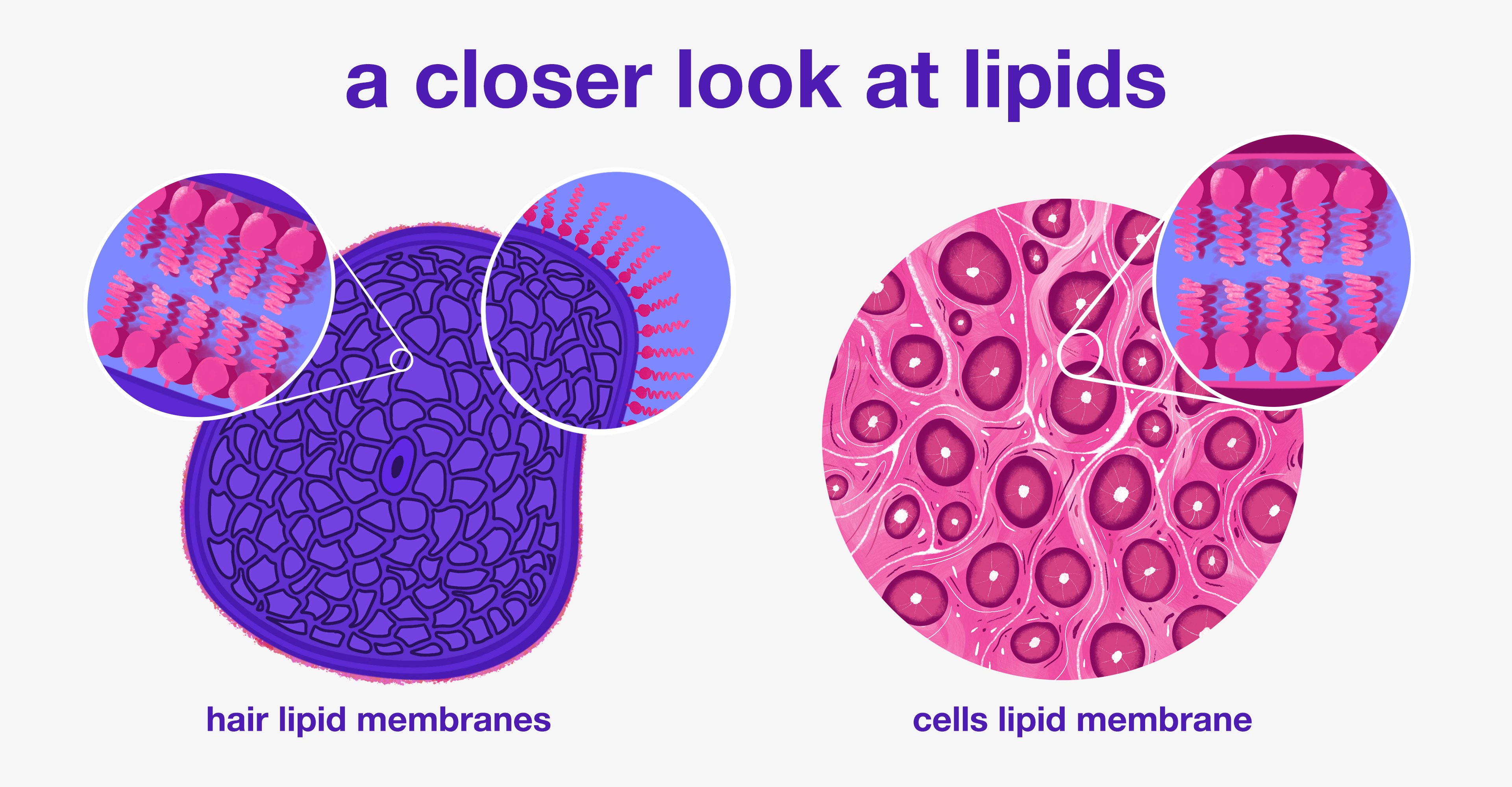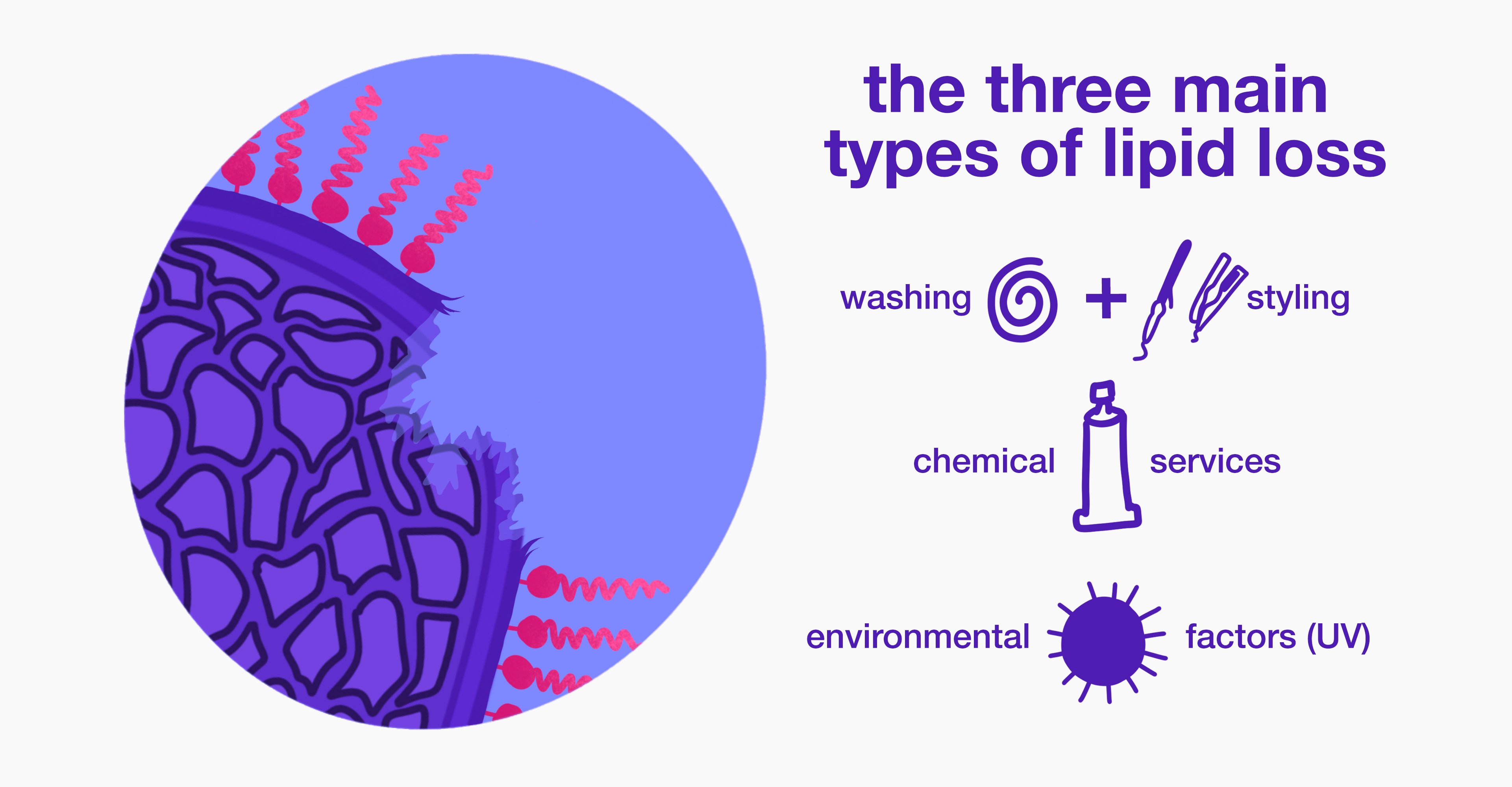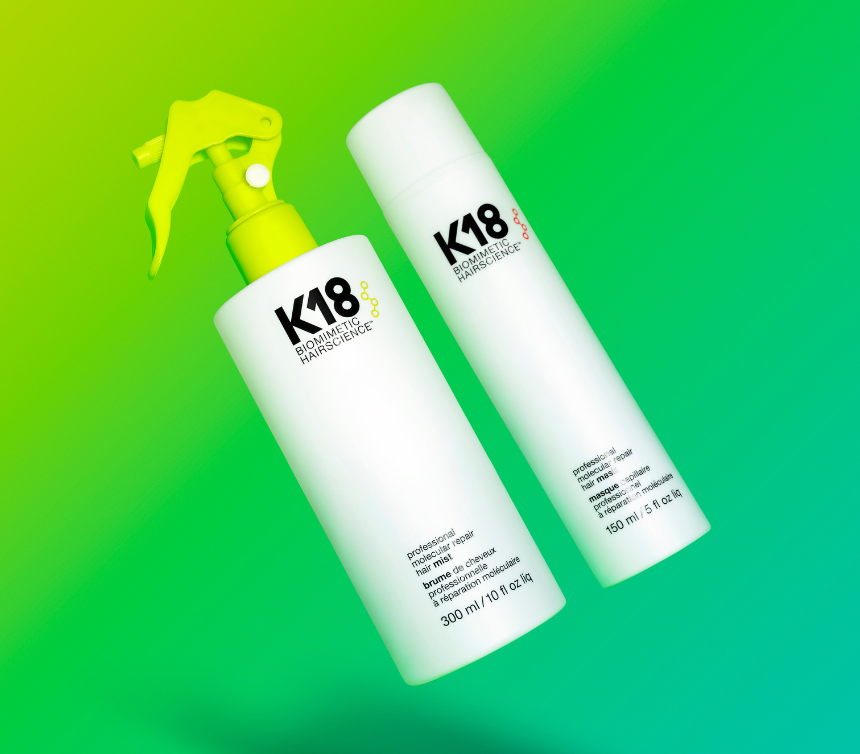But there’s another crucial piece of the puzzle that keeps hair happy and healthy—lipids.
Found on the surface and inside the hair shaft, lipids make up about 2-6% of hair’s total weight. Think of them as supporting actors in proteins’ ability to maintain hair’s shine, strength, and elasticity.
Let’s break down how lipids protect hair, why losing lipids matters, and whether they can ever really be restored.
why do surface lipids matter?
Let’s define lipids. They’re a category of fatty, waxy, oily substances that are hydrophobic, or water-disliking. Picture adding oil (a lipid) to water. The two instantly separate, forming distinct layers.
Most living things use lipids as a line of defense, keeping foreign substances out and moisture in. All of the cells in your body are separated by thin lipid membranes that act as a shield against toxins.

On the surface of hair, lipids serve as a protective coating against the environment. Internal lipids lie below the surface, inside of the cuticle and cortex layers of hair. When hair cells emerge from the scalp, they die, and the lipid membranes of hair are packed into the keratinized hair fiber. Ceramides—maybe you recognize this word from your favorite skincare—and other lipids on the surface of your skin are arranged alongside the membrane lipids + keratin proteins.
how does lipid loss happen?
There are lots of reasons lipids in and on your hair can be stripped away. Washing, chemical services, exposure to UV light, and oxidative reactions all impact those protective oils. If your everyday shampoo isn’t optimized for hair, your hair is exposed to surfactants that can strip away protective lipids.
Chemical salon services can break the chemical bonds between hair and surface lipids, making the surface of hair more hydrophilic (water-liking), increasing water and styling products’ penetrability. But many of these bonds remain broken after the service. Below the surface, chemical services act as a wrecking ball inside the hair shaft, degrading the internal lipids and proteins.
UV exposure from the sun is another contributor to lipid loss. Creating free radicals and reactive oxygen species—which react with their surroundings and wreak havox—UV exposure can damage the proteins and lipids in your hair.
In the sun with wet hair? Expect even more oxidative reactions. These reactions convert the lipids in your hair into reactive substances that cause collateral damage to surrounding lipids and proteins. This creates pores in the cuticle that leave the cortex exposed to damage.

how does lipid loss create frizz?
Check out our last Science Sunday to get the lowdown on all things frizz. The TLDR is this: Frizz is caused by the disruption of the hydrogen bonds between neighboring protein chains in the hair strand.
Hydrogen bonds are reversible bonds responsible for maintaining your hair’s temporary shape. When water passes through your cuticle, it forms hydrogen bonds with the keratin chains in your hair. This prevents the keratin chains from hydrogen-bonding with each other, changing the shape of your hair and causing frizz.
When these lipids are stripped away, your hair becomes more hydrophilic. Water can more easily enter, hydrogen-bond with the keratin chains in your strands, and cause frizz.
can lost lipids be restored?
Maybe you’ve reached for oil products to smooth your hair and tame frizz, dreaming they might repair hair from the inside. In reality, oil products act as a bandaid, creating a layer of protection to temporarily replace but never restore lost lipids that exist naturally on your hair surface. Your best bet is implementing a holistic hair care routine, avoiding overuse of harsh surfactants, and prioritizing damage repair on the molecular level. You’ll cut down on cuticle separation, alleviate frizz, and minimize your lipid loss. In other words, the more lipids, the merrier.



